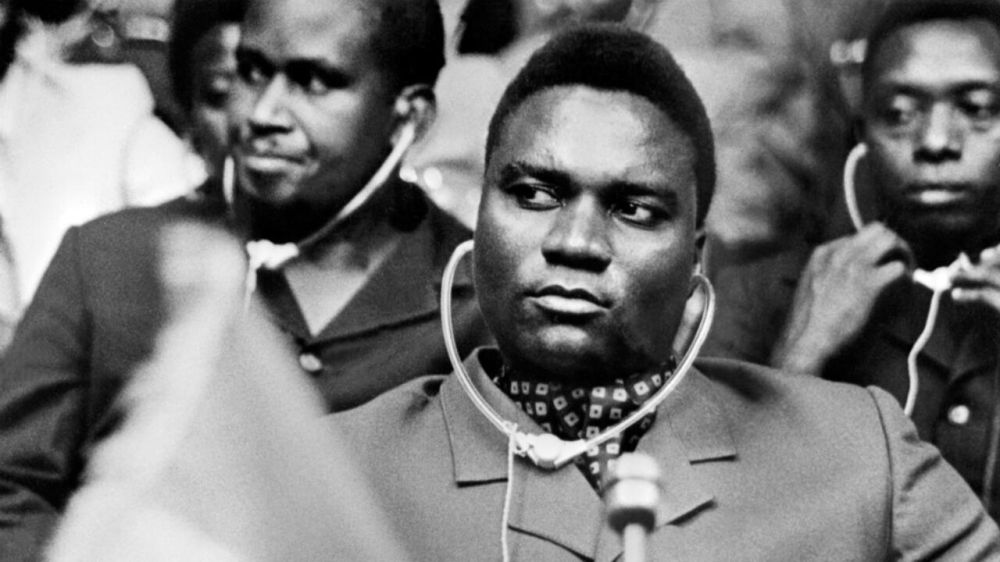President Juvenal Habyarimana declared the “final solution” for the Tutsi problem three years before the 1994 Genocide against the Tutsi. Why bring this subject today? some people may ask. Because many scholars have tried to minimize the role of President Habyarimana in the preparation of the Genocide against the Tutsi.
He is not so innocent. It is believed that the Interahamwe were founded in the 1990s and the saying “final solution’ for the Tutsi problem was attributed to Col Theoneste Bagosora. This name Interahamwe was founded by Habyarimana in 1973 and he is himself the planner of the ‘final solution’ for the Tutsi problem.

It is true the ‘final solution’ in Rwanda's contest recalls Bagosora, who on January 9, 1993, in Arusha Tanzania, was infuriated during the peace negotiations with RPF-Inkotanyi and got out of the room saying: “I am returning home to prepare for an apocalypse”. One of the resolutions that infuriated Bagosora was that the Mouvement Révolutionnaire National pour le Développement (MRND) had been given only five seats of ministers out of 21 ministries that would make up the transitional government and only 11 seats out of 70 deputies for the transitional parliament. Bagosora did not agree with this power-sharing.
The apocalypse Col Bagosora said he was going to prepare had already been prepared and was just waiting to be implemented. Bagosora knew the existence of the ‘final solution’ for the Tutsi problem, but the real instigator was Habyarimana. Col Bagosora was one of the planners, but Habyarimana knew about the plan to exterminate the Tutsi, a plan he had been working on, since the Presidency of Gregoire Kayibanda.
Testifying before the International Criminal Tribunal for Rwanda (ICTR), American historian Alison Des Forges said that “the plan to kill the Tutsis and their perceived ‘collaborators’ nationwide was in existence before the death of President Habyarimana” on April 6, 1994. It is President Habyarimana, who on April 28, 1991, three years before the genocide that declared a “final solution” for the Tutsi “problem” during an address at an MRND extraordinary congress. In his speech, he said a plan had been devised to solve, once and for all, the problem of war caused by the Tutsi, enunciating the idea of “the civil defence,” a task he gave to the Interahamwe militia he first created in 1973.
In reality, the Interahamwe were not created in 1991. The original Interahamwe refers to the MRND youth movement, created by President Habyarimana. Its official mission was to be responsible for supervising Rwandan youth in the development efforts, particularly during the Umuganda collective work, but they were used in many other ethnic policies targeting Tutsi population, like the ethnically motivated killings that occurred in the 1970s.
Until 1990, only low-level incidents of violence against the Tutsi had occurred under Habyarimana’s rule, nothing on the same scale as the persecution and mass killings that periodically took place before the 1973 coup, which he led against Kayibanda. During President Kayibanda’s rule, Habyarimana, who was the Minister of Defence, led all the army operations that killed the Tutsi countrywide. In 1963, the year he was appointed Minister of Defense, Tutsi were killed Gikongoro, Byumba, Bugesera, Kibungo, Gitarama, Ruhengeri and Kibuye.
Reports say that 35,000 Tutsi were killed, 20,000 among them from Gikongoro only. Ather the first RPF attack, the Interahamwe were officially legitimized by President Habyarimana as a self-defence official institution that was going to work hand-in-hand with the national army. According to French sociologist and expert witness for ICTR Andre Guichaoua, who wrote “From War to Genocide: Criminal Politics in Rwanda, 1990–1994,” the Interahamwe were not created by President Habyarimana.
Guichaoua quotes Mathieu Ngirumpatse, the President of the MRND as saying, “the Interahamwe was not a creation of the party. It was the young people themselves who decided to form a party. They spontaneously chose their Steering Committee and submitted their project to President Habyarimana, and then to the party authorities.
Why did they take this initiative? Quite simply out of an instinct for self-preservation. Indeed, the tactic of the other political parties was to use intimidation to force Rwandans either to join the RPF, the MDR, and the PSD, or to abandon the MRND. Many young people were not ready to accept this humiliation.
That is how Ngirumpatse wanted to dissociate President Habyarimana with Interahamwe. But it was on April 28, 1991, during the MRND extraordinary congress that President Habyarimana gave to Interahamwe a new mission, declaring that “Nzambika Interahamwe zanjye tumanuke”, meaning, “I will arm my Interahamwe and we will descend,” officially the announcing “final solution” for the Tutsi “problem”. With an official mandate, the Interahamwe grew in numbers, nearly 50,000 men in 1994.
From this official announcement by the President of the Republic, the Interahamwe were prepared to make sure the ‘final solution’ for the Tutsi problem would be a success once it was launched. In 1993, Col Bagosora in an appointments book specified that recruits for the self-defense force would live at home and be trained locally, either by communal police or by former soldiers or military reservists. They were to be organized by sector with coordination done by sector councillors and the police.
Where possible some recruits would be armed with Kalashnikovs or grenades, but he noted that participants should be trained to use spears, bows and arrows. President Habyarimana, his government and his partners knew why the Interahamwe were there. They all knew that their objective was to kill Tutsi and their training proved that they had the capacity to kill as many civilians as 1,000 every 20 minutes in Kigali.
The entire government of Rwanda was just waiting for the order to apply the ‘final solution’ for the Tutsi problem. Only the world, from Washington to Paris, London to Sydney, was lying that it didn't know that there was a plan to eliminate Tutsi. But something happened to tell them about the preparation.
On January 19,1994, the Force Commander of the UN mission in Rwanda (UNAMIR), Gen Dallaire, met with Faustin Twagiramungu, who had vital information about the militia. Twagiramungu revealed that the Interahamwe were being trained to wage a massive campaign of violence against the Tutsi. After the meeting, Gen Dallaire, sent to his superiors in New York, a message in a fax named the Genocide Fax, that revealed to alarming details about the training of the Interahamwe.
It mentioned a high-level trainer involved in the training of Interahamwe to commit atrocities against the Tutsi. And the world that was pretending not to know about the plan was well informed so that it doesn't have an excuse when history will ask what it did to stop the genocide. Three months later, Habyarimana, who expected to see the Interahamwe realizing his ‘final solution’ died in a plane crash.
The ‘final solution’ started immediately after his death in the night of April 6, under his trusted officer, Col Theoneste Bagosora, but did not succeed because the Rwandan Patriotic Army (RPA) stopped the Genocide..
Politics

April 28, 1991: Habyarimana’s un-minimizable declaration of “the final solution”

President Juvenal Habyarimana declared the “final solution” for the Tutsi problem three years before the 1994 Genocide against the Tutsi. Why bring this subject today? some peopl...















